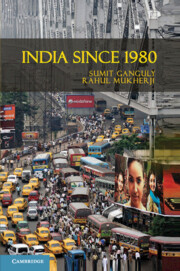3 - India's Economic Transformation
Published online by Cambridge University Press: 05 June 2012
Summary
How did India make the transition from an economic laggard to one of the most rapidly growing economies in the world? Its sluggish economic development had once been pejoratively described as the “Hindu rate of growth.” Industrial modernization and the so-called green revolution could muster a mere 3.4 percent average annual rate of growth between 1956 and 1974, at a time when many Asian economies were booming. But between 1975 and 1990, the country's economic growth accelerated at a rate higher than 5 percent and then increased to more than 6 percent after 1992. Subsequently, the Indian economy grew at 8.8 percent between 2003 and 2007, and thereby transformed itself into one of the fastest- growing economies in the world along with China. The World Bank–International Monetary Fund (IMF) Annual Meeting in Singapore in 2006 was dedicated to the rise of China and India. In the aftermath of the global financial crisis, India continued to grow more rapidly (6.7% during 2008–9) than all the major Asian economies, except China.
To address these questions, it is necessary to trace how India embarked upon this growth path. Its policy makers gradually deregulated private-sector investment after 1975. Deregulation from the mid-1970s needs to be understood in the context of a political and economic environment that had produced one of the most highly regulated economies in the world. The phenomenon of industrial deregulation was consolidated in the 1980s.
- Type
- Chapter
- Information
- India Since 1980 , pp. 60 - 108Publisher: Cambridge University PressPrint publication year: 2011



